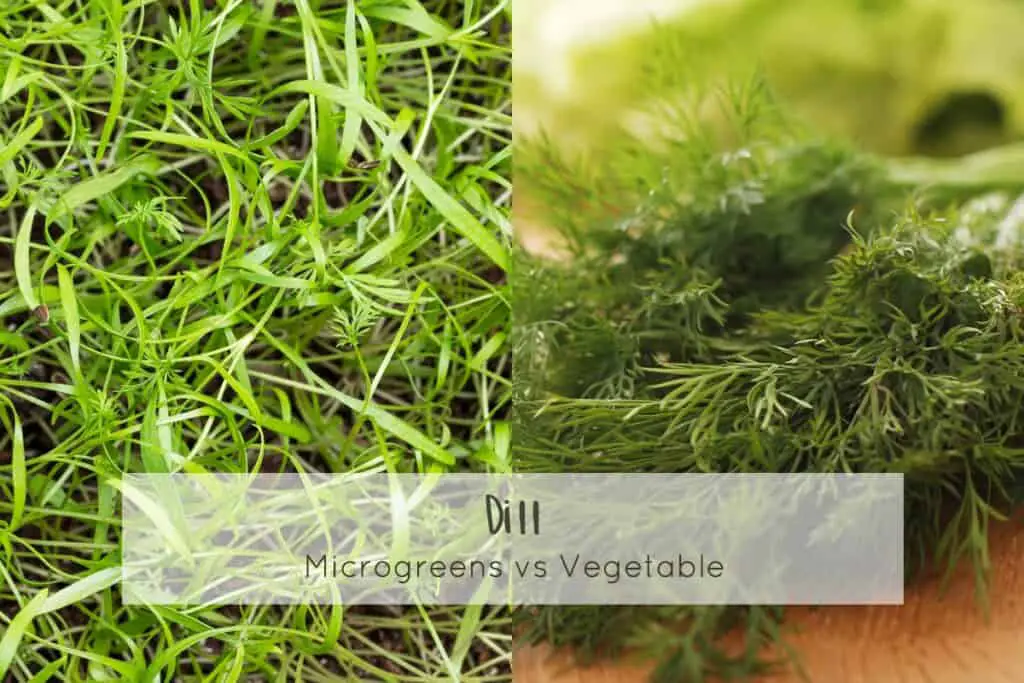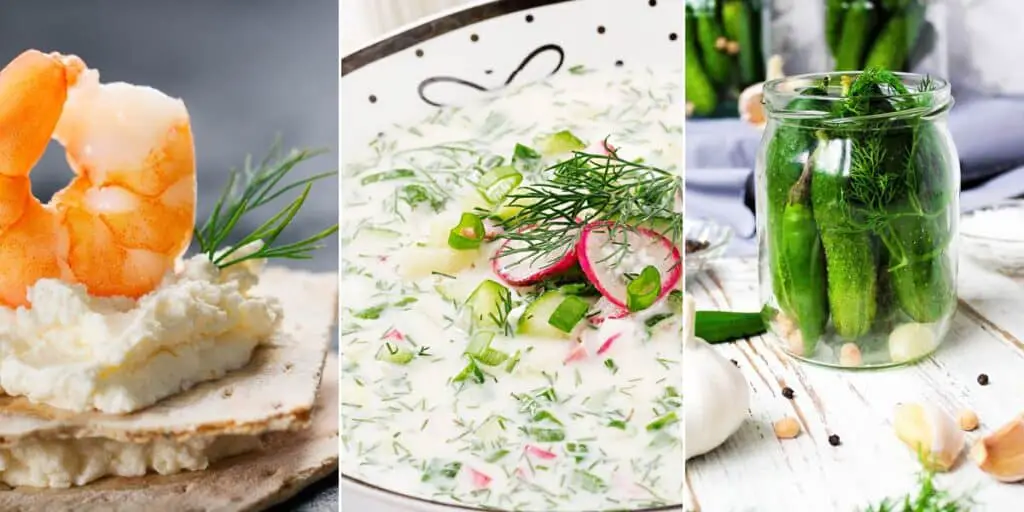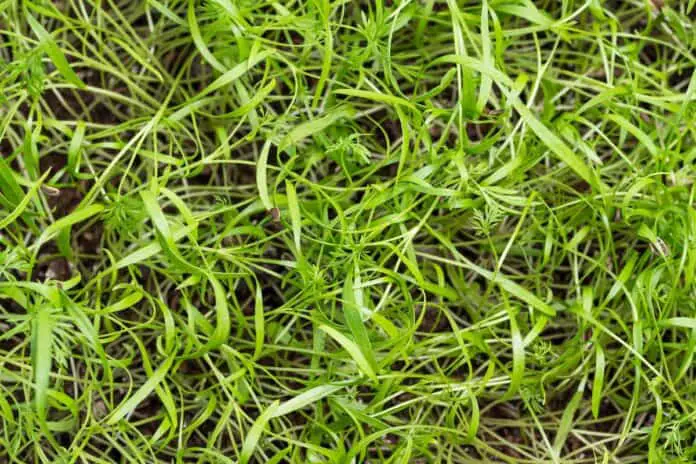Dill microgreens are aromatic and add a great taste to fish, eggs, potato salads, soup, and seafood dishes. These mildly but sweet flavored microgreens have a wide range of use and are easy to grow.
What are Dill Microgreens?
Dill is a herb, and it is part of the family Apiaceae, the same as celery and parsley. It’s known for its delicate and thin appearance, unique flavor, and its use to elevate the flavor of various dishes. You will taste aromas of anise and lemon.
As microgreens, the seeds will flourish into wonderful long stems with green and feathery leaves. Dill is best when used fresh, and therefore growing them as microgreens are great. They grow quicker than the adult version, and you can have a large batch of dill ready for harvest within three weeks.
| Growing period | 16-20 days |
| Flavor | Sweet, fresh, and grassy flavor |
| Growing difficulty | Medium |
| Buy seeds | Dill seeds from True Leaf Market |
Description
Dill is widely popular in Europe and Asia. The usage of dill has been traced back to around 1400 BC where it was found in the tomb of Egyptian Pharaoh Amenhotep II. It was as well discovered as its first use on the Greek island of Samos, and to the greeks dill signified wealth. Some cultures have cultivated it for medicinal qualities.
It is native to the eastern Mediterranean region and Asia, but today it is widely used across all continents. You may associate dill with pickles, but there is so much more to this thin and fragile herb. It’s used in a variety of cuisines found in American, European, Middle Eastern, Asian, and North Africa.
There are different types of dills. You have the Bouquet, Superdukat, Fernleaf, and Long Island Mammoth. Out of these varieties, the Superdukat is preferably used for cooking and the Bouquet is great for growing microgreens.
As full-grown plants, they will form yellow flowers, but as we harvest just after the true leaves have emerged, we will not get to the flowering stage.

General Nutrition & Benefits
Dill is not just tasty but healthy too! These delicate greens are filled with health benefits. They are rich in vitamins A, and C, and are also a good source of fiber as well as calcium, folate, calcium, manganese, and iron.
RELATED: The Most Nutritious Microgreens to Grow and Eat
How to Grow Dill Microgreens
One main difference to grow dill as microgreens instead of full-grown plants is that you can do it indoors any time of the year!
| Growing timeline (estimated) | |
|---|---|
| Presoak | No |
| Preferred medium | Soil or coconut coir |
| Avg. seed weight (10/20 tray) | 15 gram |
| Germination period (blackout) | Day 1-6 |
| Growth time (sunlight) | Day 7-15 |
| Harvest | Day 16-20 |
Dill microgreens grow slower than many other types. You will be ready for harvest in around three weeks.
As the leaves on dill are thin and delicate, you can decide if you want to harvest and have them shorter or wait for another couple of days to get them more developed. Full-grown dill takes around six weeks to reach their full length.
For a full growing guide, read our How to Grow Dill Microgreens: A Step-by-Step Guide.
Culinary Guiding
Dill is used in a large variety of dishes, even though most people would probably associate it with pickles! But there is a wide range of food you can pair up with this aromatic microgreen.

With its unique taste, it’s commonly used to flavor seafood such as salmon, egg dishes, and fresh small potatoes. It has a grassy flavor, and you will get a stronger taste if you eat it fresh instead of cooked.
We have listed some ideas on how you can use your dill microgreens:
- Add dill to your chicken skewers
- Put some dill in with your homemade pickled cucumbers
- Use as a garnish on top of your tomato soup
- Mix it with dijon mustard and add on top of your potatoes
- Make it an addition to soft cheeses such as feta cheese
- Cut some dill and mix in your tortilla
For more inspiration, check out this site with 20 Bright & Fresh Recipes to Use Up a Bunch of Dill


